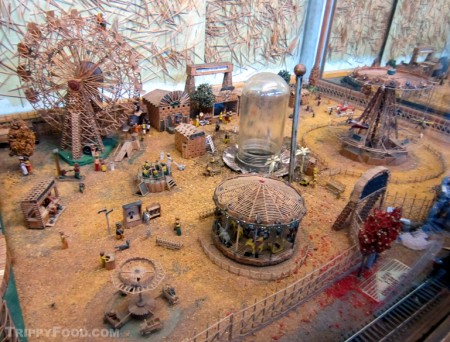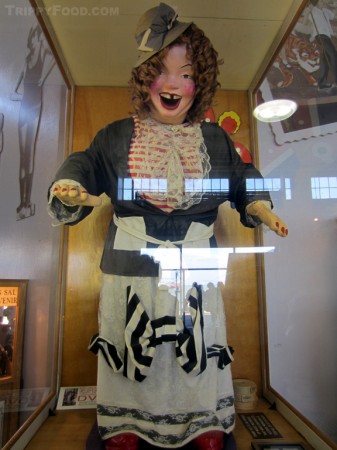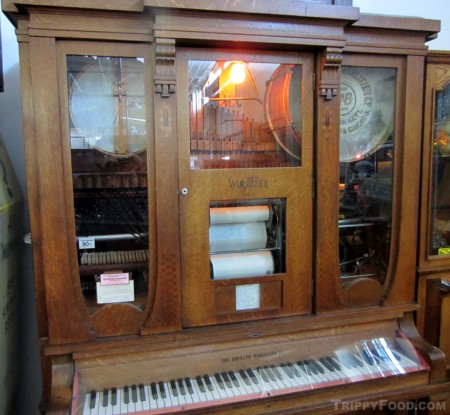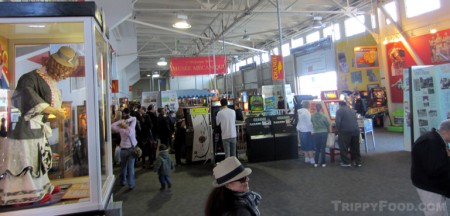Musée Mécanique
San Francisco, California
Those old enough to remember the plethora of amusement parks and piers along the east and west coasts will undoubtedly recall the arcades and fun houses that were well-stocked with manual pinball machines, Skee Balls, nickelodeons, mutoscopes and a variety of coin-operated mechanical games and devices. There were games where you squeezed a lever and lights would indicate your sexual prowess, and the familiar animatronic “fortune teller” that would dispense a card with a cosmic advice from the great beyond. Many of these places had been around since the mid-nineteenth century and by the end of the 20th century had fallen into disrepair or went belly-up trying to compete with technologically advanced amusement parks such as the Six Flags chain, electronic games at modern arcades like Dave and Buster’s and the ultimate gaming machine – the personal computer. A handful of these emporiums still exist in places like Salem Willows, Hampton Beach, and the Atlantic City Boardwalk, although many of these now consider their ancient machines video games like Centipede, Asteroids and Space Invaders.
If you’re lucky you may still find places with boxes containing mechanical, hand-carved figures that dance or perform in a wooden pageant, “peep show” mutoscopes that flip still pictures through a viewer fast enough to give the impression of motion, or one-man bands – player pianos with other mechanical percussion or stringed accompaniment, all of which briefly entertain with the insertion of a coin or two. One such place that has amassed an impressive collection of machines dating back to mid-1800s is San Francisco’s Musée Mécanique, located at Pier 45 at the end of Fisherman’s Wharf. Approximately 200 machines are assembled in a warehouse-sized building, each of which has been restored to full functionality. In their former life, these machines would have been housed in a penny arcade (one cent was usually all that was required to animate the devices); the denomination required for a single play today has skyrocketed to at least a quarter deposited in their updated coin boxes. Admission to the museum is free, although a pocket full of quarters is a must (don’t be a cheapskate and mooch your mechanical entertainment off of others’ hard-earned cash).
The total collection (not all machines are on display) were gathered over a period of almost 100 years; Ed Zelinsky began purchasing and exhibiting the devices as a boy in the 1920s. Many of the games were featured at the now-defunct Playland amusement park at Ocean Beach until it closed in the 1960s, at which time the collection was moved into the basement of San Francisco’s Cliff House. In 2002, the collection was moved to its present location on Pier 45; after Ed’s death, his son Dan took over the maintenance and restoration of the amusements.
One of the more prominent pieces on display is the original Laffing Sal from Playland (her identical twin sisters were featured in fun houses across America). The deposit of two quarters sends the wooden giantess into mechanical convulsions while recorded maniacal laughter blasts from inside the box. It’s hard to imagine that old Sal would make people laugh – her motions and laughter can best be described as creepy. There are several mechanical music machines; in addition to coin-operated player pianos, these centenarian boxes contain woodwinds, tambourines, percussion instruments and even a mandolin. If hammering out your frustration is in order, fret not, as there are at least two of the infamous Whac-A-Mole machines onsite; video game representation in the collection ends where it began – with a console version of the original video game – Pong. One would assume that with the 3-D realism of modern role playing games there wouldn’t be much interest in this electronic dinosaur, but the ridiculously simple paddle ball-style game still somehow manages to generate a waiting line for play.
In a world in which virtual reality has led us to the point where the most talked-about performance at a recent music festival was the holographic image of long-dead rapper Tupac Shakur, it’s a refreshing departure to be able to be transported back to a time when all you need to keep yourself entertained for an afternoon is a pocketful of coins. Now where’s the salt-water taffy and corn dog shacks?
Musée Mécanique
Pier 45, Shed A
Fisherman’s Wharf
San Francisco, CA 94133
GPS Coordinates: 37°48’33.40″N 122°24’57.31″W





